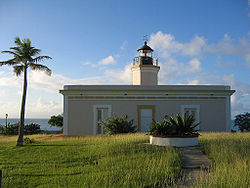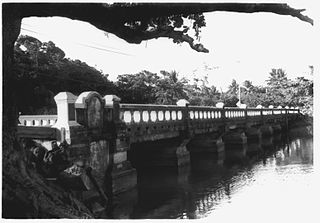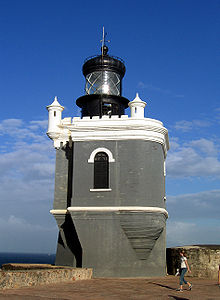 Lighthouse painted cream with white trim, lantern black. Restored in 1992, the building formerly housed a small museum, the building has deteriorated and is now closed to the public. Located on the east side of the entrance to the harbor of Isabella Segunda (Vieques) on the north side of the island of Vieques.
Lighthouse painted cream with white trim, lantern black. Restored in 1992, the building formerly housed a small museum, the building has deteriorated and is now closed to the public. Located on the east side of the entrance to the harbor of Isabella Segunda (Vieques) on the north side of the island of Vieques.
The Punta Mulas lighthouse entered service on June 1, 1896. It was designed by Francisco de Albacete and built by the government itself on a promontory near the port of Isabel II, to illuminate the Vieques passage and to guide navigation into the port, which exported cattle and various crops. The building measures 53 feet long by 35 feet wide. It closely resembles the Arroyo lighthouse, with which it shares the pattern of circles and rectangles in the cornice, and is almost identical to the one at Puerto Ferro, just opposite on the south coast of Vieques.
The building was initially painted light gray with white details and baseboard. The 28-foot tall octagonal tower is at the center of the structure, its sixth-order lens projected a red light eight miles away; currently the light is produced by a beacon fed by solar panels. The two Vieques lights are the only Puerto Rican lighthouses built originally with two doors, of which the rear is flanked by two circular openings. Over the entrance facing the sea there is a base for a flag post, which does not figure in the original plans. Since both lighthouses were constructed on high ground, their towers are short and their only opening to the outside is the door leading to the roof. The interior of the lighthouse was completely remodeled during the 1940s but the exterior appearance, the lantern (whose interior is lined with wood) and apparently the brick roof remained original. The building was closed in 1949 but from 1961 to 1981 it served as residence for Mrs. Gilda Romero, who prevented its rapid deterioration. The Vieques municipality acquired the structure and carefully restored it in 1992 but the building has again started to deteriorate and is currently closed to the public.



